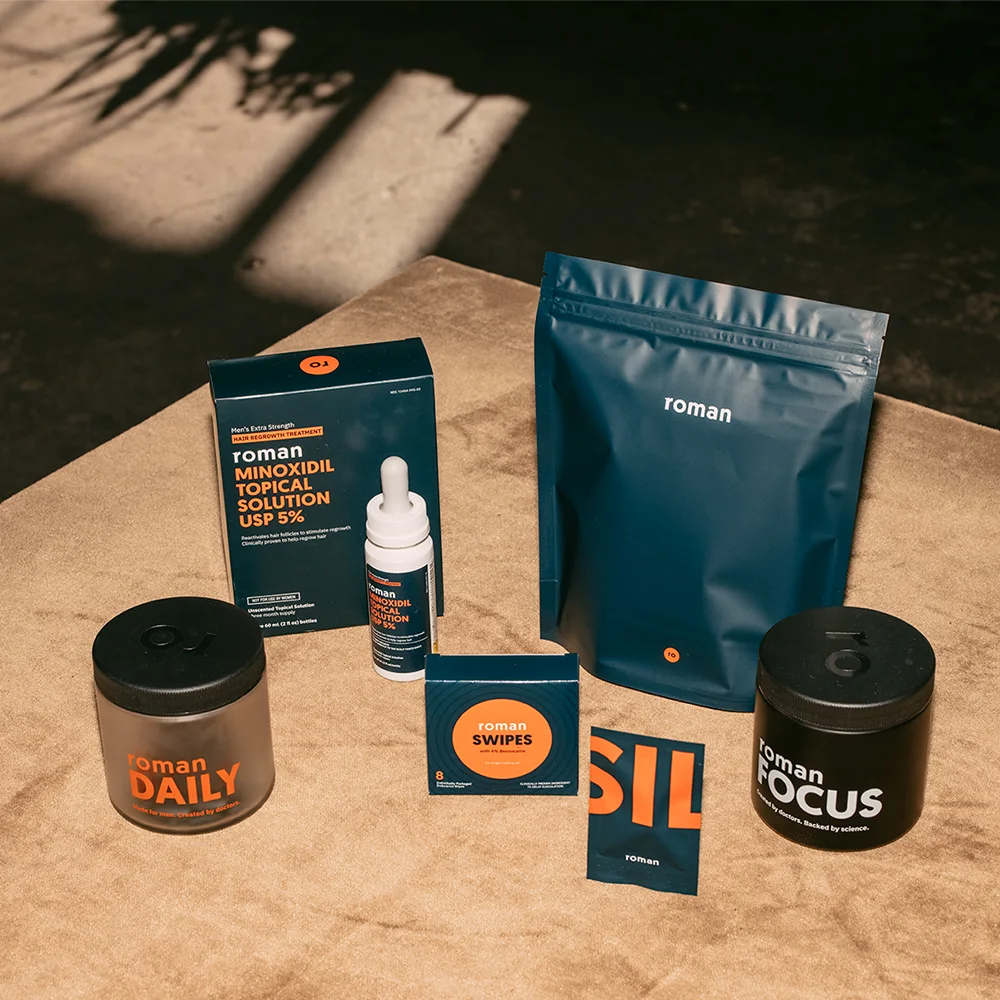Here's what we'll cover
Here's what we'll cover
Here's what we'll cover
Similar to varicose veins in the legs, a varicocele can cause a dull, aching pain around the testicles and can reduce sperm quality, ultimately causing fertility problems.
If your healthcare provider has told you that you have a varicocele, you may have some concerns surrounding your fertility because you’ve heard that varicoceles are a common cause of low sperm production. The good news is that varicoceles are fairly common with 15–20% of men having these enlarged veins in the scrotum, and treatments are available that can reduce pain and increase your chances of conception (Crawford, 2014; Leslie, 2021).
What is a varicocele?
Varicoceles are enlarged veins in the scrotal sac, which holds the testicles. When checking their testicles, some men might describe varicoceles as a ‘bag of worms’ if they’re large enough. Medical experts characterize them as small, medium, and large. Though they usually don’t cause pain, varicoceles can lead to an aching and sometimes throbbing pain that can be constant or recurring (Leslie, 2021).
What causes varicoceles?
In 80–90% of cases, varicoceles occur on the left side and can cause left testicle pain. That’s because the veins and anatomy of the testicles are different. The left testicle hangs lower and has a vein that drains blood at an angle into the left renal vein, a higher pressure vein than the vein on the right side. It’s believed that a varicocele may form when the valves inside the veins aren’t working well enough, allowing blood to back up and pool in the area where the left testicular vein meets the left renal vein, causing veins to widen (Leslie, 2021).
Unlike varicose veins in the legs, which tend to form as people age, varicoceles in the scrotum often begin to form in adolescents hitting puberty. Though varicoceles can appear at younger ages, they typically get larger as men age, leading to pain. Additionally, varicoceles can run in families (Alsaikhan, 2018; Griffiths, 2018).
Varicocele symptoms
When there is pain, your varicocele may cause a dull ache in your scrotum, testicle, or groin. While rare, sometimes the pain can be sharp or stabbing. Many men describe the pain as a heaviness that gets worse with activities like exercise or standing for a long time. If the veins are large, you may be able to feel a lump or lumps (Paick, 2019).
Left vs. right-side varicoceles
Most varicoceles are on the left side of the scrotum. However, those with a varicocele on the left have a 30–40% chance of having one on the right side. Isolated right testicle varicoceles are not common and can be a sign of abnormal vein anatomy, a hernia, or a kidney tumor. If your healthcare provider suspects a varicocele in your right testicle, they will likely run some additional tests to determine the causes of the enlarged veins on the right side (Gleason, 2018).
Varicocele complications
Most of the time, you will not notice or feel a varicocele. However, when varicoceles become large or painful, they can change the scrotum enough to lead to several complications:
Varicoceles and fertility problems
Researchers aren’t exactly sure how varicoceles are harmful to sperm production. One theory is that enlarged veins increase the testicular temperature, which can impair sperm. Under a microscope, when a varicocele affects sperm, the sperm often show what researchers call a “stress pattern.” The pattern shows low sperm count, sperm that don’t move as well, and an increase in abnormal sperm (Naelitz, 2019; Leslie, 2021).
Not all varicoceles cause fertility problems, and most men with a varicocele are fertile (Liguori, 2004). However, in men with fertility problems, varicoceles are often the reason for trouble conceiving: 40% of men with primary infertility (trouble conceiving a first child) and 80% of men with secondary infertility (difficulty conceiving a second child) have a varicocele. Fortunately, the condition happens to be the most common correctable cause of male infertility (Leslie, 2021; Paick, 2019).
Varicoceles and testicular pain
The warming of the testicles, pressure from veins, and other physical changes that varicoceles cause may trigger pain. There are a lot of nerves in this area, and pressure from an enlarged vein could be a factor. Once a vein triggers a nerve, pain can radiate from other places in the body, so it can be challenging to determine the exact cause of pain (Owen, 2017; Patel, 2017).
Varicoceles and testicular shrinkage
In addition to affecting sperm quality, varicoceles can also cause testicles to fail to develop fully or shrink. Testicles contain sperm-producing tubes. Varicoceles put pressure on the testicles while exposing them to heat. The result is that varicoceles can keep the testicle from growing in the case of adolescents or cause them to soften or shrink in size in adults (Jacobson, 2017; Vaganee, 2018).
Varicoceles and lower testosterone
Researchers believe varicoceles have the potential to cause testicular failure, which involves not only a lowered sperm count and a shrinking testicle but also a reduction in hormones such as testosterone. Research shows varicoceles can reduce testosterone and that removing the enlarged veins leads to an increase in testosterone in more than 80% of those who have them removed (Leslie, 2021).
Diagnosing varicoceles
A diagnosis involves discussing your pain, daily activities, a family history, and a physical exam of the scrotal area. Large varicoceles are easy to see, and a physical exam usually detects medium ones. Small varicoceles may require what’s called a “Valsalva maneuver,” which pushes blood to the area. This involves taking a deep breath and trying to exhale through your mouth while keeping your mouth closed. It sends pressure to your lower abdomen and helps urologists find small varicoceles (Leslie, 2021; Kim, 2015).
If there are questions about a diagnosis and to rule out other problems, your healthcare provider may use pelvic Doppler ultrasound, which can show blood vessel dilation. If male fertility is an issue, a semen analysis can help guide treatment decisions (Leslie, 2021).
Healthcare providers use these extra measures because an important part of diagnosing varicoceles is ruling out any other causes of the discomfort you’re feeling. Other conditions that may cause pain in the scrotal area include testicular tumors, spermatoceles and hydroceles (benign cysts), sexually transmitted infections, kidney stones, and hernias (Paick, 2019; Banyra, 2012 ).
Contact a healthcare provider if you notice the following (Paick, 2019):
Pain or swelling in the scrotum
A mass (lump or nodule) on your scrotum
Testicles that are changing sizes
Fertility problems
Treating varicoceles
Most varicoceles don’t need treatment. Men who are experiencing pain, testicular atrophy, or infertility based on an abnormal semen analysis, may be candidates for surgery. Medical providers usually only recommend surgery in cases of varicocele that are large enough to be felt during a physical exam (Leslie, 2021).
If a man is opting for surgery to relieve pain, there’s a period of watchful waiting to make sure something else isn’t causing the pain, like a strained groin muscle. Conservative treatment can offer relief and includes non-steroidal anti-inflammatory drugs and limited physical activity (Paick, 2019).
When your healthcare provider deems surgery as the best option, a procedure called a varicocelectomy resolves nearly 80% of cases of testicular pain. Microsurgical varicocelectomy and laparoscopic surgery are among the minimally invasive procedures used to surgically treat varicoceles (Paick, 2019; Leslie, 2021). These are quick outpatient procedures that require a small incision, usually in the groin (Phan, 2021; Chen, 2016).
After a varicocelectomy, 70% of men have an improved semen quality, and 40–60% have improved conception rates. It takes at least three to four months to see enhanced sperm quality after surgery, with the final results coming about six months after surgery (Leslie, 2021).
Fortunately, there are a variety of treatments that can address conditions like varicocele. Contacting your healthcare provider is important whenever you have questions about a medical condition.
DISCLAIMER
If you have any medical questions or concerns, please talk to your healthcare provider. The articles on Health Guide are underpinned by peer-reviewed research and information drawn from medical societies and governmental agencies. However, they are not a substitute for professional medical advice, diagnosis, or treatment.
References
Alsaikhan, B., Zini, A., Alrabeeah, K., & Delouya, G. (2016). Epidemiology of Varicocele. Asian Journal of Andrology , 18 (2), 179. doi: 10.4103/1008-682x.172640. Retrieved from https://www.ncbi.nlm.nih.gov/pmc/articles/PMC4770482/
Banyra, O., & Shulyak, A. (2012). Urinary tract infection acute epididymo-orchitis: Staging and treatment. Central European Journal of Urology , 65 , 139–143. doi: 10.5173/ceju.2012.03.art8. Retrieved from https://www.ncbi.nlm.nih.gov/pmc/articles/PMC3921787/
Çayan, S., Akbay, E., Saylam, B., & Kadıoğlu, A. (2020). Effect of varicocele and its treatment on testosterone in hypogonadal men with varicocele: Review of the literature. Balkan Medical Journal , 37 (3), 121–124. doi: 10.4274/balkanmedj.galenos.2020.2020.1.85. Retrieved from https://pubmed.ncbi.nlm.nih.gov/32070086/
Crawford, P., & Crop, J. A. (2014). Evaluation of scrotal masses. American family physician , 89 (9), 723–727. Retrieved from https://pubmed.ncbi.nlm.nih.gov/24784335/
Gleason, A., Bishop, K., Xi, Y., & Fetzer, D. T. (2019). Isolated right-sided varicocele: Is further workup necessary? American Journal of Roentgenology , 212 (4), 802–807. doi: 10.2214/ajr.18.20077. Retrieved from https://www.ajronline.org/doi/10.2214/AJR.18.20077
Griffiths, L., Vasudevan, V., Myers, A., Morganstern, B. A., & Palmer, L. S. (2018). The role of inheritance in the development of Adolescent Varicoceles. Translational Andrology and Urology , 7 (6), 920–925. doi: 10.21037/tau.2018.09.02. Retrieved from https://www.ncbi.nlm.nih.gov/pmc/articles/PMC6256048/
Hadad, Z. (2016). [right-sided varicocele testis as the only sign of right-sided renal tumour]. Ugeskrift for laeger, 178 (5). Retrieved from https://pubmed.ncbi.nlm.nih.gov/26857303/
Jacobson, D. L., & Johnson, E. K. (2017). Varicoceles in the pediatric and adolescent population: Threat to future fertility? Fertility and Sterility , 108 (3), 370–377. doi: 10.1016/j.fertnstert.2017.07.014. Retrieved from https://pubmed.ncbi.nlm.nih.gov/28803635/
Kim, Y. S., Kim, S. K., Cho, I.-C., & Min, S. K. (2015). Efficacy of scrotal Doppler ultrasonography with the Valsalva maneuver, standing position, and resting-valsalva ratio for varicocele diagnosis. Korean Journal of Urology , 56 (2), 144. doi: 10.4111/kju.2015.56.2.144. Retrieved from https://pubmed.ncbi.nlm.nih.gov/25685302/
Leslie, S. W. (2021). Varicocele. [Updated Aug 12, 2021]. In: StatPearls [Internet]. Retrieved from https://www.ncbi.nlm.nih.gov/books/NBK448113/#
Liguori, G., Trombetta, C., Garaffa, G., Bucci, S., Gattuccio, I., Salamè, L., & Belgrano, E. (2004). Color Doppler ultrasound investigation of varicocele. World journal of urology , 22 (5), 378–381. Retrieved from https://link.springer.com/article/10.1007%2Fs00345-004-0421-0
Naelitz, B., & Parekh, N. (2019). Effect of varicocele treatment on oxidative stress markers and sperm DNA fragmentation. Varicocele and Male Infertility , 271–283. doi: 10.1007/978-3-319-79102-9_22. Retrieved from https://link.springer.com/chapter/10.1007/978-3-319-79102-9_22
Paick, S., & Choi, W. S. (2019). Varicocele and testicular pain: A Review. The World Journal of Men's Health , 37 (1), 4. doi: 10.5534/wjmh.170010. Retrieved from https://www.ncbi.nlm.nih.gov/pmc/articles/PMC6305863/
Vaganée, D., Daems, F., Aerts, W., Dewaide, R., van den Keybus, T., De Baets, K., De Wachter, S., & De Win, G. (2018). Testicular asymmetry in Healthy adolescent boys. BJU International , 122 (4), 654–666. doi: 10.1111/bju.14174. Retrieved from https://pubmed.ncbi.nlm.nih.gov/29461677/
Velasquez, J. (2021). Acute Scrotum Pain. [Updated Jul 18, 2021]. In: StatPearls [Internet]. Retrieved from https://www.ncbi.nlm.nih.gov/books/NBK470335/#










